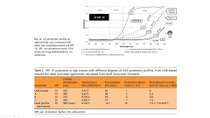Debunking sunscreen myths part 4

In June 2011, the American FDA standardized and regulated UVA protection for the first time. They abandoned the proposal in 2007 that UVA should be assessed in-vivo, instead opting for an in-vitro determined assessment. This concluded that the standard of broad spectrum UVA protection could be fixed at a critical wavelength greater than or equal to 370nm. In addition, it stated that any sunscreen with SPF greater than or equal to 15 could make the claim that it ‘reduces the risk of skin cancer’ to consumers. Because of this, a ‘fact’ that has circulated is that sufficient UVA protection can be marked at the critical wavelength of 370nm.
How curious! Why did the FDA choose 370nm?
This was reportedly a decision made based on an experiment conducted by Professor Green et al here in Australia in the 90s, involving more than a thousand participants. Australia of course makes a great location for sunscreen testing, with some of the highest skin cancer rates recorded in the world attributed to the abundance of sunshine and extreme UV ratings.
However, it is important to note that during this time, one of the first UVA filters, BMDBM, had just been developed; it was 8% octinoxate (EHMC) and 2% BMDBM, and had a SPF of 16. At that time, Green et al found that the volunteers in the experiment who used it every day showed less skin cancers than the control group (who did not apply the sunscreen) after four years, and less malignant melanoma in the same group of people [1,2] after 15 years. Considering Green et al’s work, the FDA adopted and defined 370nm as the critical wavelength.
But, it is no secret that the UV filters used by Green et al at the time were not photostable. Green only had photo unstable UV filters like BMDBM at her disposal (remember, BMDBM was one of the first UVA filters ever developed!). BASF’s photostable UVA broad spectrum filters like Uvinul® A Plus, Tinosorb® M, and Tinosorb® S did not even exist for Green to use even if she wanted to. Imagine…. if only they had! We can safely assume that if Green et al used our highly innovative and photostable sunscreen filters, her sunscreen would have offered even better protection and even more impressive results than the ones reported.
This begs the question: what does the UVA protection of sunscreen look like using photostable UVA filters?

Figure 13 (based on data in Table 2) shows the progress in reducing UVA transmittance of different SPF 15 day creams. Transmittance can be readily converted to a protection factor. The monochromatic protection factor (mPF) is just the reciprocal value mPF = 1/T at any given wavelength. In the figure, the average monochromatic protection factors in the UVA-I range (340–400nm) range from as low as mPF−UVA−I=1 (no protection) to 15 (uniform protection). A CW = 370nm provides only an average mPF − UVA − I of around 3. Raising the bar to CW = 380nm would already provide an mPF − UVA − I of 7. An ‘ideal sunscreen’ would provide an equal SPF 15 throughout the UV range, similar to textile. The figure also shows the UVA protection logos used in different regions, as discussed earlier.
Fact:
It is important to note that the critical wavelength of 370nm is sufficient for UVA protection, but why settle for less when more is easily within our reach? With BASF’s Uvinul® A Plus, and our broad spectrum filters like Tinosorb® M, Tinosorb® S, and Tinosorb® S Lite Aqua, matchless UVA protection is achievable.
*Always read the label, use only as directed.
Interested in learning more? Contact us so we can share our insight and expertise in developing solutions for the sunscreen industry.
®/TM Registered trademark. All rights reserved.
REFERENCE
1. Green A., et al. Daily sunscreen application and betacarotene supplementation in prevention of basal-cell and squamous-cell carcinomas of the skin; a randomized controlled trial. Lancet 1999;354:723-729
2. Green A., et al. Reduced melanoma after regular sunscreen use: randomized trial follow-up, J. Clin. Oncol 2011:29:257-263®/TM Registered trademark. All rights reserved.